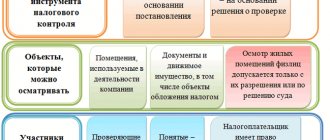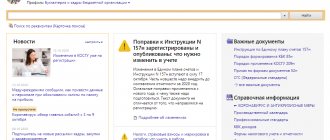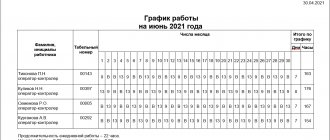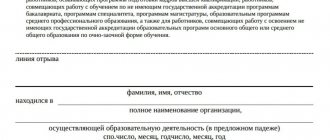Russian legislation provides for the possibility of borrowing not only money, but also various goods. Both legal entities and individuals can enter into an agreement on such a transaction. In practice, a commodity (material) loan agreement is most often used when executing a transaction between organizations.
Dear readers! The article talks about typical ways to resolve legal issues, but each case is individual. If you want to find out how to solve your particular problem , contact a consultant:
+7 (499) 938-81-90 (Moscow)
+7 (812) 467-32-77 (Saint Petersburg)
8 (800) 301-79-36 (Regions)
APPLICATIONS AND CALLS ARE ACCEPTED 24/7 and 7 days a week.
It's fast and FREE !
What does it mean to borrow goods?
Borrowed funds are often sought when it is necessary to purchase certain things. At the same time, many people forget that they can borrow not only money, but also various goods.
Banks rarely resort to trade loans, trying to record all transactions in monetary terms. Unlike loans, loans can be issued and taken by any legal entity or individual.
According to the law, the borrower must return completely similar goods to the lender. Moreover, all important characteristics must coincide, for example, size, color, and so on.
Often a commodity loan is issued between companies. Typically, the terms of such agreements are more favorable, since the lender is a party interested in the partner’s development, for example, an affiliated company.
Loan between a legal entity and an individual
The legislation does not prohibit legal entities from borrowing items from individuals and vice versa. Often the founder acts as an individual lender. Such business operations help out legal entities in case of an acute shortage of raw materials, fuel or other materials.
When concluding such a transaction, it is important to calculate the tax risks for the company. Enterprises and companies that use the general taxation system (OSNO) risk spending a lot on taxes. If the transaction volume is large, the amount of VAT that must be paid to the budget will increase sharply.
If a company cannot independently calculate all the parameters of a commodity loan, it is better to seek help from a tax consultant or lawyer.
Features of the agreement
People often confuse loan and credit agreements, although Russian legislation quite clearly distinguishes between the two types of such agreements.
Let's look at how a loan agreement differs from a credit agreement:
- possibility of conclusion without the participation of the bank;
- the permissibility of obtaining a loan with or without interest;
- the ability to stipulate penalties in advance;
- mandatory indication in the contract of the characteristics of the transferred materials, raw materials or other things.
According to the legislation of the Russian Federation, loans can only be provided to organizations that have the appropriate license from the Central Bank of the Russian Federation. At the same time, loans can be issued and received by absolutely any companies and citizens who have reached the age of 18.
A loan always requires the borrower to pay interest. In loans, everything is different. The parties themselves can agree on the interest rate or even enter into an interest-free loan agreement.
If necessary, a certain fine may be collected from the lender for improper performance of the contract. Its size should be clarified in advance in the text of the contract.
A commodity loan agreement must necessarily include the following information:
- details of the parties;
- loan term;
- availability and amount of interest;
- characteristics of the product and its monetary value.
Important! It is unacceptable to indicate in a commodity loan agreement that it can be repaid in cash. Only interest on the use of goods loaned can be received by the lender in cash.
As already mentioned, absolutely any person can be a party to the transaction.
In practice, three types of loan agreements are common:
- both parties to the transaction are ordinary citizens;
- two organizations are involved in the transaction;
- One party is the company, and the other is an ordinary citizen.
Important! A non-monetary loan agreement must be concluded in paper form and certified by the signatures of the parties.
It is worth noting that the loan agreement is considered concluded only after the transfer of goods, and not from the moment the papers are signed. This is another significant difference between loans and credits.
Commodity loan between individuals
An individual can act as any party to the transaction. This is not prohibited by current legislation. The age of the participants in the transaction has no restrictions. A citizen who has reached the age of majority can participate in it. The scale of transactions is also not limited.
Regular large volumes of in-kind loans provided (received) by individuals come under the supervision of various regulatory authorities. If the legal norms are observed, the parties to the transaction should not be afraid of such attention. The main thing is that the creditor who transferred the items under an interest-bearing loan agreement pays taxes on the monetary reward received.
The transaction must be documented, indicating in the text of the contract the passport details of the borrower and the lender. It is even better if the text of the agreement is certified by a notary. This will allow official personal identification of the participants in the transaction.
Video: How to prepare for a request
Between individuals
Russian legislation fully allows individuals to act as any party to a commodity loan transaction. Sometimes a situation arises when two individuals. persons enter into a loan agreement between themselves.
If the loan is issued at interest, then it is worth considering the need for the lender to pay the relevant taxes. Also, with a large scale of activity, it may come under the attention of various regulatory authorities. But there is no need to be afraid of this. There is no liability for issuing commodity loans if all taxes are paid.
When concluding an agreement between two physicists, it indicates the passport details of both parties.
Read the article about how to quickly take out a microloan online on a card urgently, without refusal, around the clock. Find out below what are the rates for urgent loans online if you take them via the Internet to a bank card in 45 seconds.
Between legal entities
Affiliated companies often resort to commodity loans when it is necessary to urgently transfer materials, raw materials, etc. from one legal entity to another. This is convenient, for example, when there are delays in deliveries.
Currently, commodity loans between legal entities are the most common. To complete the transaction, it is enough to draw up a simple written agreement, a sample of which can be found here.
Between an individual and a legal entity
Legislation allows organizations to receive goods on credit from individuals and vice versa. Sometimes companies receive temporary support from their own founders in this way.
Organizations should think through in advance all the tax problems that await them in the future, since a commodity loan agreement has a certain accounting feature and when the goods are returned, their actual sale occurs.
Taxpayer organizations that use OSNO should be especially attentive to commodity loan transactions with individuals. With large amounts, there is a high probability of spending a lot on taxes.
The legislative framework
Obtaining a trade loan is regulated by Chapter 42 of the Civil Code of the Russian Federation. Article 807 allows for the transfer of an item with clearly defined qualitative and quantitative characteristics to one of the parties to the contract (the lender) in commodity transactions. The second party to the agreement (borrower) is obliged to return the same item or another item with similar characteristics within a specified period.
The choice of an item transferred for temporary use under a commodity loan should be approached carefully, otherwise the transaction will be re-qualified. You cannot transfer a car with state registration. License plates will refer to important characteristics of the item being transferred. The borrower will not be able to return a car with the same generic characteristics.
It is strictly forbidden to transfer under the contract items prohibited for circulation (any type of weapon, ammunition, explosive mixtures, etc.). If the subject of the transaction is goods with restricted circulation, the parties to the agreement must have licenses or permits to use them in the production process.
Return of a commodity loan
According to the legislation of the Russian Federation, repayment of a loan issued not in money, but in things, can only be carried out in things. It is unacceptable to include in the contract a clause about the possibility of repaying this type of loan with money.
If a loan agreement is concluded with the participation of a legal entity, it includes a clause on the possibility of repaying the debt with money, then such a transaction will certainly raise questions from inspectors and tax authorities.
In tax accounting, the return of an in-kind loan for legal entities - borrowers will look like the sale of goods. Accordingly, you will have to pay the necessary taxes on this amount.
Advice. When borrowing between legal entities, it is better if both parties to the transaction apply the same taxation system. In this case, the cost of paying taxes will be minimal or reduced to zero.
It is important to understand that commodity loans are interest-free and with the payment of a certain fee for the use of things belonging to the lender. The first option is the most common, but the second is also possible under certain circumstances.
If an interest-bearing commodity loan agreement is concluded, the parties must agree in advance on the procedure for paying interest. Otherwise, interest will have to be paid monthly.
Let's look at what interest payment options exist:
- with deferred payment;
- at the end of the term;
- regularly in accordance with the payment schedule.
If the loan is not repaid on time, the lender may go to court and demand forced collection, as well as payment of various penalties, fines and legal costs.
Registration of the contract
The main document that confirms the receipt (issuance) of a loan in kind is an agreement (agreement).
An agreement for any composition of participants is drawn up in writing, the parties sign at the end of the text. Written registration will secure the transaction and increase guarantees of return, and will serve as the basis for drawing up reports to the Federal Tax Service.
The main nuance of such a loan is the presence in the agreement of a clause on the transfer of ownership of the transferred items from one legal (individual) person to another.
A correctly drafted contract text should contain the following information:
- party details;
- the period for which the items are transferred;
- presence (absence) of interest for the use of a thing (items);
- name and description of items transferred to the recipient (goods, raw materials, fuel, materials);
- dispute resolution procedure;
- penalties for violation of contract clauses.
In a commodity loan agreement, it is important to correctly describe the subject of the agreement. This will avoid confusion when transferring and returning material assets.
It is necessary to take into account the qualitative, quantitative and technical characteristics of the transferred items:
- full name;
- model and brand;
- color;
- package;
- equipment;
- quality;
- other important technical characteristics.
Important! Lawyers do not recommend overstating the value of transferred items in a contract. When conducting inspections, such a fact will be of interest to tax inspectors; the parties to the agreement may receive fines and penalties.
The optimal duration of the agreement is 10-20 days. During this time, the borrower can solve his problems and repay the debt to the lender without suffering serious material damage. At the legislative level, there are no restrictions on the terms of commodity loans. The lender has the right to provide the recipient with items for a period of up to a year.
An agreement drawn up in accordance with all the rules will be a legitimate document even without registration by a notary. The creditor will be able to apply to the courts to collect the debt from the unscrupulous borrower. The court will force you to return the items, pay interest, fines and all legal costs.
Accounting entries
Accounting for loans is carried out in accordance with the requirements of PBU 15/01 “Loan Accounting”. The borrower makes loan payments using accounts 66 (short-term loan) and 67 (long-term loan).
The primary accounting document is the loan agreement. Since trade credit transactions are sales, they are subject to VAT.
The lender makes the following entries in the accounting database:
- DT58 KT41. Products transferred to the debtor.
- DT58 KT68. VAT charged.
The borrower makes the following entries:
- DT10, 41 KT66, 67. The items provided for in the loan agreement have been received.
- DT19 KT66, 67. VAT charged.
- DT91 KT66, 67. Interest accrued on the loan.
- DT66, 67 KT51. Interest is transferred to the lender.
The return of goods is recorded in accounting by the following entries:
- DT66, 67 KT10, 41. Items were returned.
- DT66, 67 KT68. VAT has been charged.






